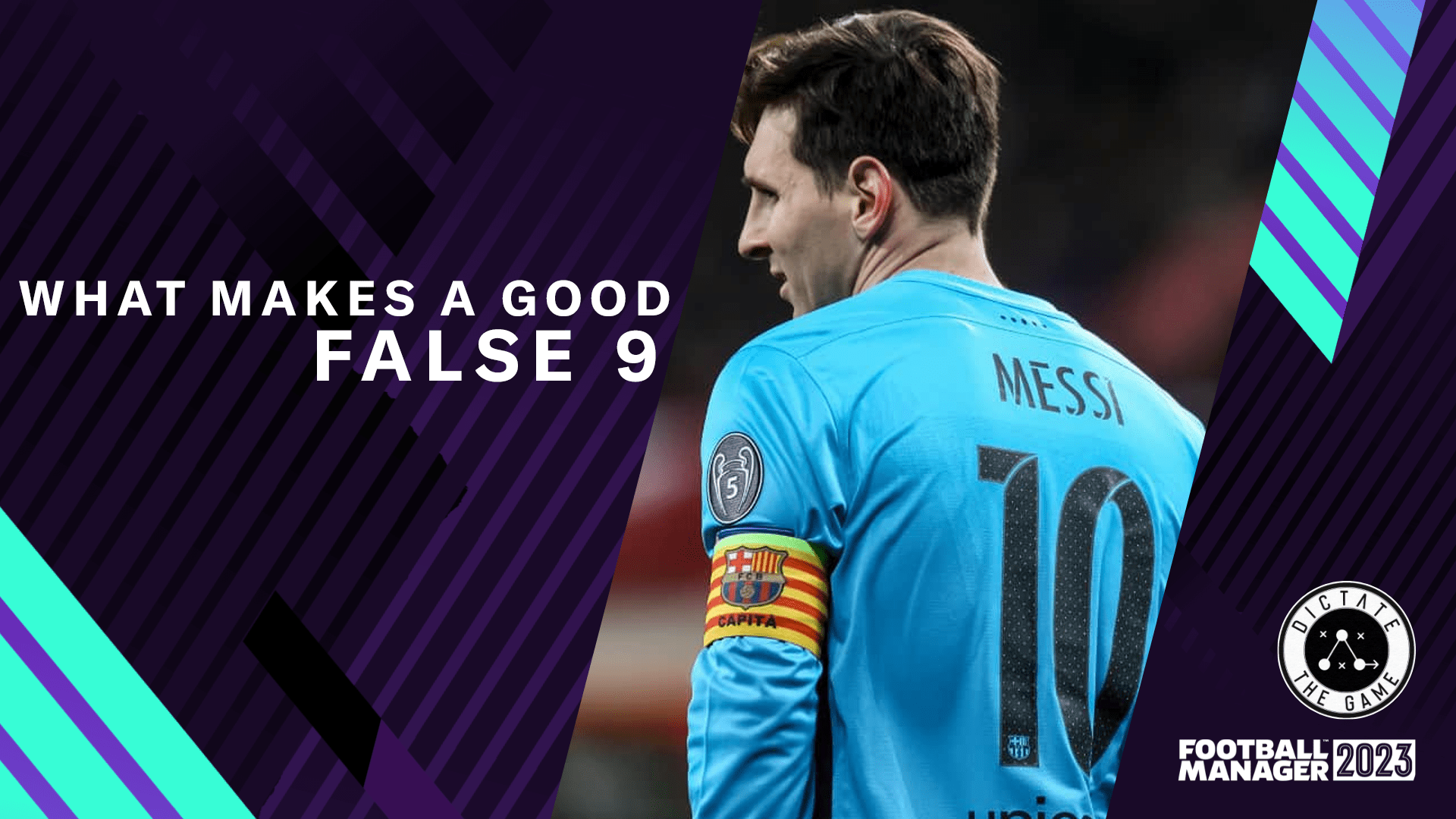
FM23: What makes a good False 9?
In a game dominated by 4-3-3, 4-2-3-1 and 4-5-1 formations, centre-backs have become accustomed to marking just a single player. A team playing with a false nine is playing without a dedicated striker or target man and relies on midfielders running from deep to do the damage.
Take the case of Messi and Barca, considering it’s the most successful use of the system in footballing history and look at the advantages.
Defining the False 9
The false 9 position is an attacking role that’s used most often in a 4-3-3 formation with attack-minded wingers. Rather than playing as a conventional, goal-poaching striker, the false 9 looks for pockets of space between the midfield and attack.
This type of positioning and movement not only makes the attacker difficult to mark but also draws out defenders and leaves space for teammates to run into.
A false 9 typically plays instead of a regular number 9. Since it is an unconventional position, it is often impossible to tell that a team will line up with a false 9 when looking at a team sheet or formation.
To find out more what the video from TIFO below
False 9 Positioning
A striker’s positioning, movement, and proximity to the central defenders often influence how the centre-backs play. If the striker is constantly running in behind the defence, the centre-backs may play a high line in an attempt to catch the striker offside.
Modern centre-backs are used to handle one to two strikers. Since the past few decades of soccer have been dominated by just a handful of formations, defensive structure, and player positioning revolve around the same attacking patterns. The false 9 takes advantage of this trend, playing in the gaps between defensive and midfield lines.
The false 9 moves away from the defensive line, receiving the ball in deeper areas, usually between the centre of the field and the edge of the penalty box. Once the false 9 receives the ball, he or she is immediately looking to create goalscoring opportunities or attacking phases. When the false 9 gains possession, it is usually a trigger for teammates to make certain runs.
Effective False 9
The reason a false 9 can be so effective is that it is hard for the defensive team to determine whose responsibility it is to follow the striker. If the centre-back follows the attacker, the defensive line is broken, leaving room for attacking players to make runs.
Attributes of a False 9
The most important attributes of a false 9 combine the key characteristics of a striker and an attacking midfielder. Most false 9s begin their careers as strikers so their primary traits include finishing, positional sense, movement, and ball control. To go along with those attributes, a False 9 must also be very capable in terms of link-up play and chance creation, have an exemplary first touch, the ability to turn quickly, excellent vision, and sufficient technical skills to execute passes and crosses.
Implementation of a False 9
The first implementation of a false 9 role was observed as early as the 1930s. It was Hugo Meisl, the coach of the Austrian national team, who opted for the use of playmaking forward Matthias Sindelar instead of a more traditional physical number 9, Josef Uridil, to fit the fluid type of football he desired to play.
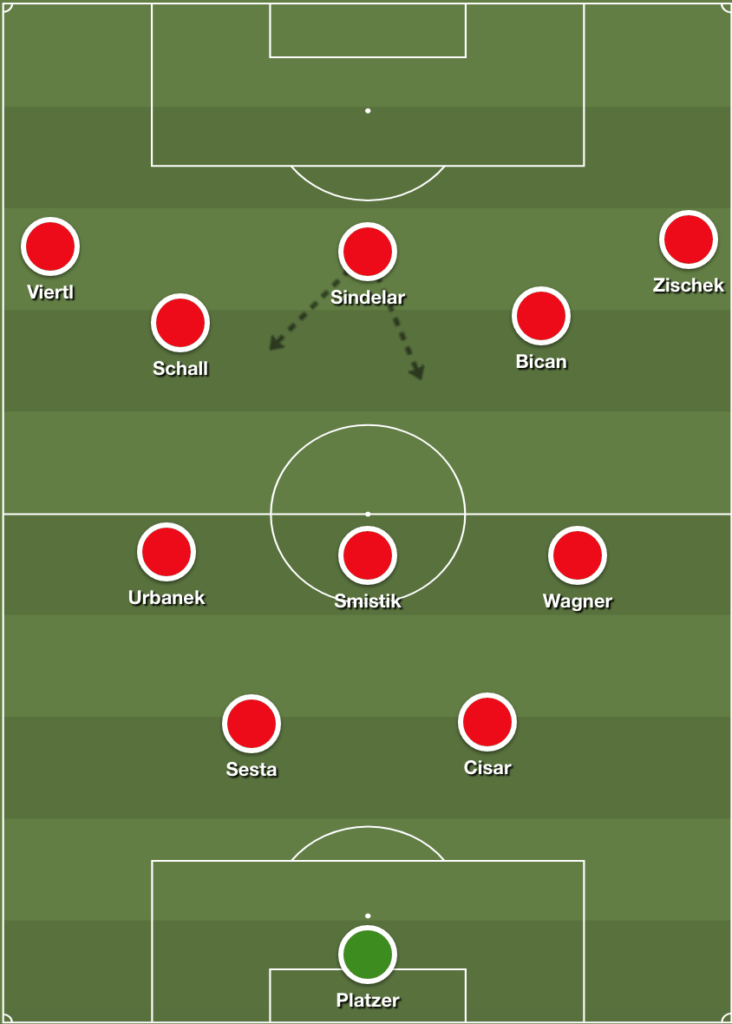
Arguably the most famous use of the False 9 is when the role was given to Messi at Barcelona and to Cesc Fábregas during Euro 2012
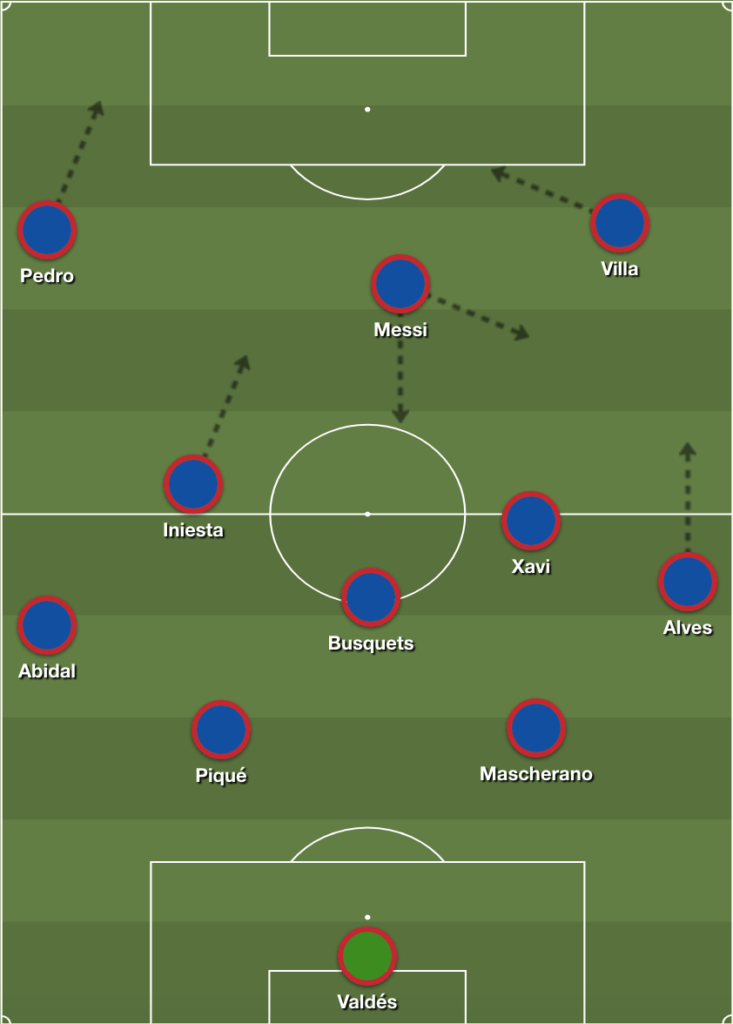
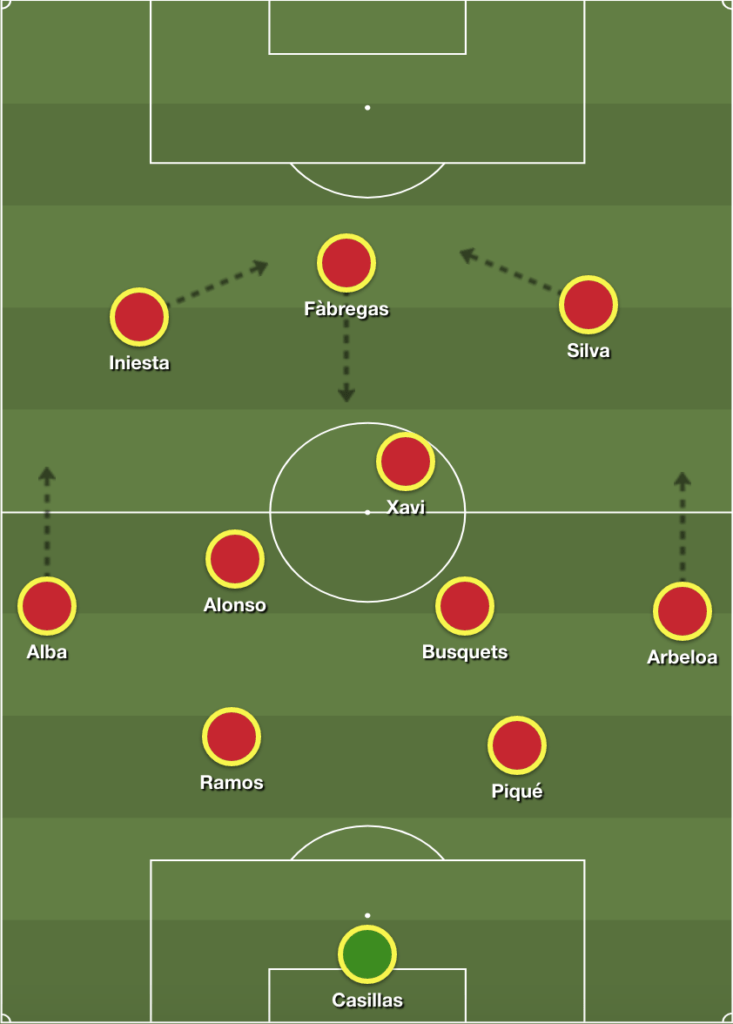
False 9 on Football Manager
Let’s see how Football Manager defines a False 9

As you can see, the definition of a False 9 on Football Manager backs up the writing above regarding the problems that using a False 9 can cause for defenders.
Let’s look at what attributes that Football Manager highlights for the False 9.

Again, the highlighted attributes back up what is written above. The false 9 requires a mixture of the attributes of a traditional striker alongside the attributes of an attacking midfielder.
There are many player instructions for a False 9 on Football Manager however this can be changed based on the way you want the False 9 to play
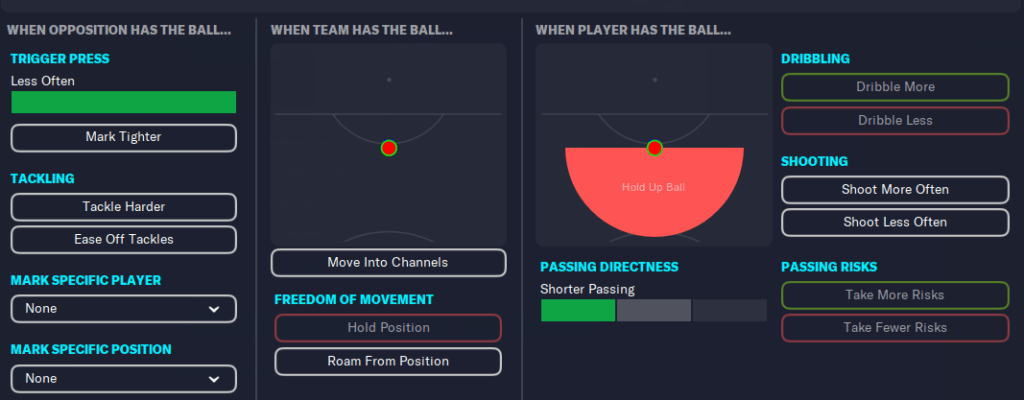
Recommended False 9’s on Football Manager
| Name | Position | Current Club | Nationality | Age |
|---|---|---|---|---|
| Name | Position | Club | Nat | Age |
| Kevin De Bruyne | M (RLC), AM (C) | Man City | BEL | 30 |
| Erling Haaland | ST (C) | Man City | NOR | 21 |
| Karim Benzema | ST (C) | Real Madrid | FRA | 34 |
| Mohamed Salah | AM (RL), ST (C) | Liverpool | EGY | 30 |
| Bernardo Silva | M/AM (RC) | Man City | POR | 27 |
| Sadio Mané | AM (RLC), ST (C) | FC Bayern | SEN | 30 |
| Phil Foden | AM (RLC) | Man City | ENG | 22 |
| Gabriel Jesus | AM (RL), ST (C) | Arsenal | BRA | 25 |
| Paulo Dybala | AM (RC), ST (C) | Roma | ARG | 28 |
| Marco Reus | AM (RLC), ST (C) | Borussia Dortmund | GER | 33 |
| Jack Grealish | M (RL), AM (RLC) | Man City | ENG | 26 |
| Jamal Musiala | M (C), AM (RLC) | FC Bayern | GER | 19 |
| Álvaro Morata | ST (C) | Atlético | ESP | 29 |
| Memphis Depay | AM (LC), ST (C) | Barcelona | NED | 28 |
| Ferran Torres | AM (RL), ST (C) | Barcelona | ESP | 22 |
| Kai Havertz | AM (C), ST (C) | Chelsea | GER | 23 |
| João Félix | AM (RLC), ST (C) | Atlético | POR | 22 |
| Nabil Fekir | AM (RLC), ST (C) | Betis | FRA | 28 |
| Henrikh Mkhitaryan | M (C), AM (LC) | Inter | ARM | 33 |
| Dejan Kulusevski | M (R), AM (RC) | Tottenham | SWE | 22 |
| Wissam Ben Yedder | ST (C) | Monaco | FRA | 31 |
| Piotr Zieliński | M/AM (C) | Napoli | POL | 28 |
| Pablo Sarabia | M (RL), AM (RLC) | PSG | ESP | 30 |
| Diogo Jota | AM (RL), ST (C) | Liverpool | POR | 25 |
| Sergio Canales | M/AM (C) | Betis | ESP | 31 |
| Rodrigo De Paul | M (C), AM (RLC) | Atlético | ARG | 28 |
| Christopher Nkunku | M/AM (RLC) | RB Leipzig | FRA | 24 |
| Dani Olmo | M (C), AM (RLC) | RB Leipzig | ESP | 24 |
| Lorenzo Insigne | AM (L), ST (C) | Toronto FC | ITA | 31 |
| Marek Hamšík | M/AM (C) | Trabzonspor | SVK | 34 |
| Davy Klaassen | M/AM (C) | Ajax | NED | 29 |
| Ante Rebić | AM (L), ST (C) | Milan | CRO | 28 |
| Evanilson | ST (C) | FC Porto | BRA | 22 |
| Ruslan Malinovskyi | M/AM (C) | Atalanta | UKR | 29 |
| Marko Arnautović | ST (C) | Bologna | AUT | 33 |
| Giovani Lo Celso | DM, M (LC), AM (C) | Villarreal | ARG | 26 |
| Emil Forsberg | M (L), AM (LC) | RB Leipzig | SWE | 30 |
| Malcom | M (R), AM (RLC) | Zenit | BRA | 25 |
| Florian Wirtz | M/AM (C) | Bayer Leverkusen | GER | 19 |
| Breel Embolo | AM (RC), ST (C) | Monaco | SUI | 25 |
| Patrik Schick | ST (C) | Bayer Leverkusen | CZE | 26 |
| Steven Berghuis | M (R), AM (RLC), ST (C) | Ajax | NED | 30 |
| Roberto Soriano | M/AM (C) | Bologna | ITA | 31 |
| Takumi Minamino | AM (RLC), ST (C) | Monaco | JPN | 27 |
| João Mário | M (RLC), AM (C) | SL Benfica | POR | 29 |
| Charles De Ketelaere | M/AM (C), ST (C) | Milan | BEL | 21 |
| Carlos Soler | WB (R), DM, M/AM (RC) | PSG | ESP | 25 |
| Emile Smith Rowe | AM (RLC) | Arsenal | ENG | 21 |
| Dominic Calvert-Lewin | ST (C) | Everton | ENG | 25 |
| Otávio | M (RC), AM (RLC) | FC Porto | POR | 27 |
If you enjoyed this, then make sure to follow us on Twitter and Facebook to keep up with all Dictate The Game content. Thank you for reading!